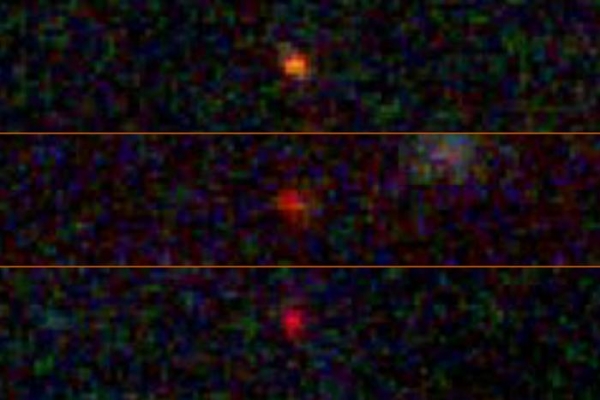Stars beam brightly out of the darkness of space thanks to fusion, atoms melding together and releasing energy. But what if there’s another way to power a star?
A team of astrophysicists including Katherine Freese at The University of Texas at Austin analyzed images from the James Webb Space Telescope (JWST) and found three bright objects that might be “dark stars,” theoretical objects much bigger and brighter than our sun, powered by particles of dark matter annihilating. If confirmed, dark stars could reveal the nature of dark matter, one of the deepest unsolved problems in all of physics.
“Discovering a new type of star is pretty interesting all by itself, but discovering it’s dark matter that’s powering this—that would be huge,” said Freese, director of the Weinberg Institute for Theoretical Physics and the Jeff and Gail Kodosky Endowed Chair in Physics at UT Austin.
Read more at: University of Texas at Austin
These three objects (JADES-GS-z13-0, JADES-GS-z12-0, and JADES-GS-z11-0) were originally identified as galaxies in December 2022 by the JWST Advanced Deep Extragalactic Survey (JADES). Now, a team including Katherine Freese at The University of Texas at Austin speculate they might actually be “dark stars,” theoretical objects much bigger and brighter than our sun, powered by particles of dark matter annihilating. (Photo Credit: NASA/ESA)


